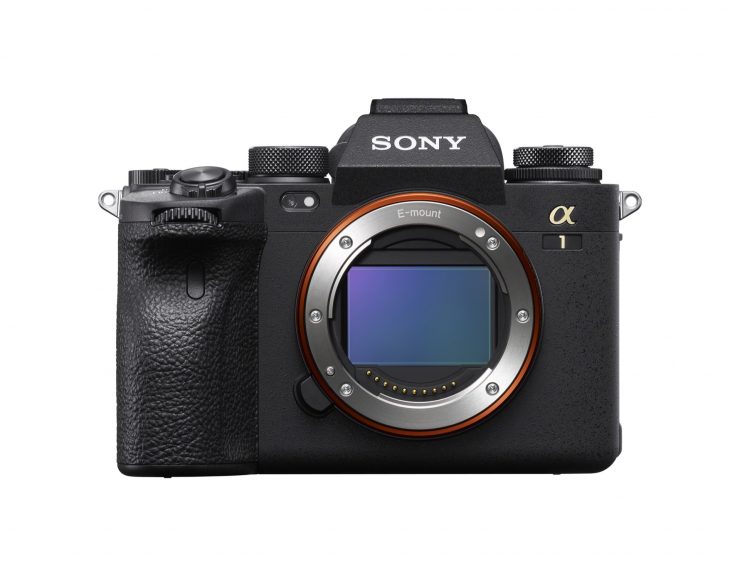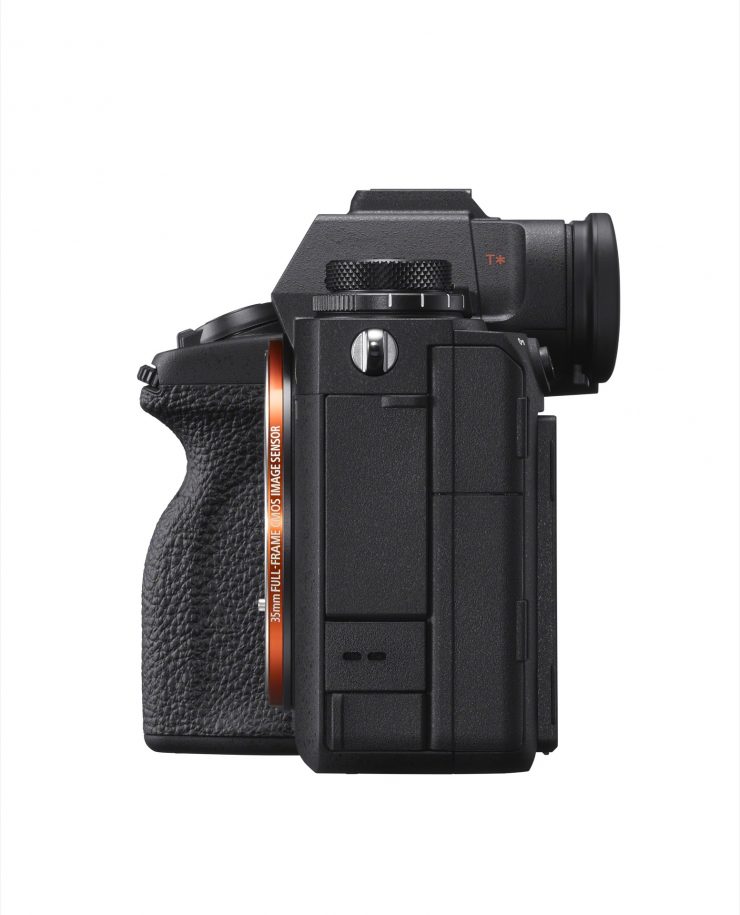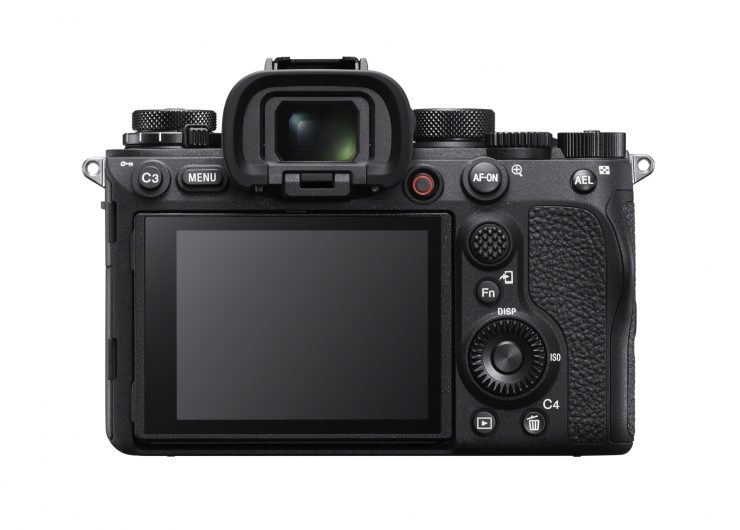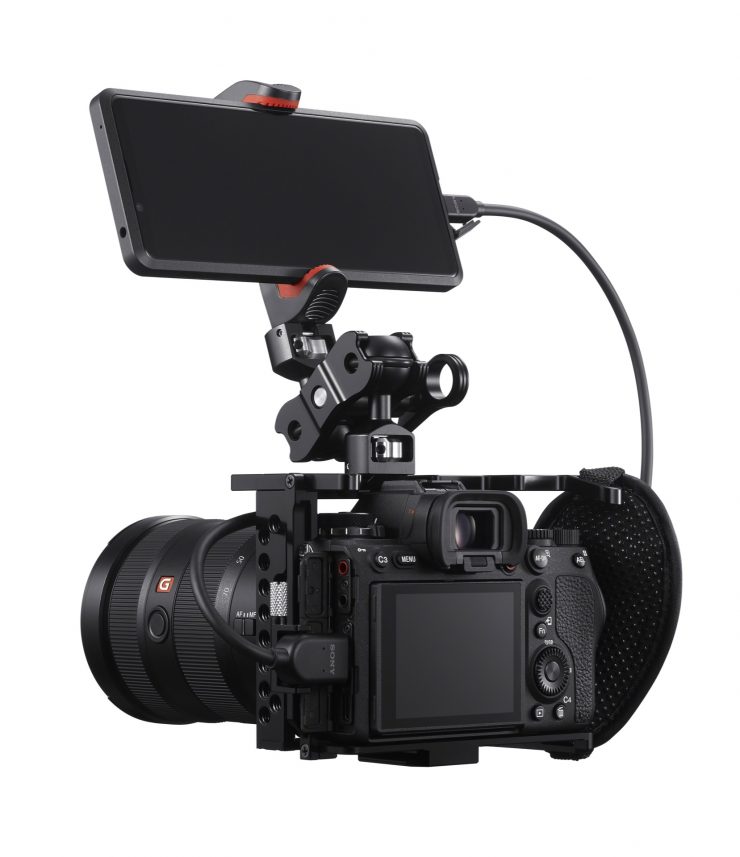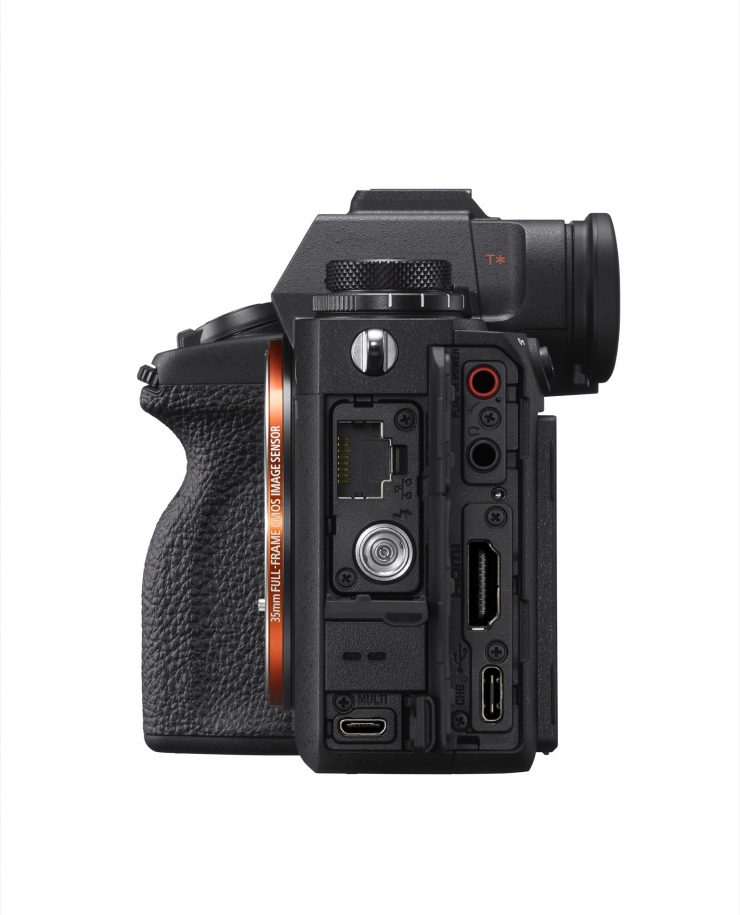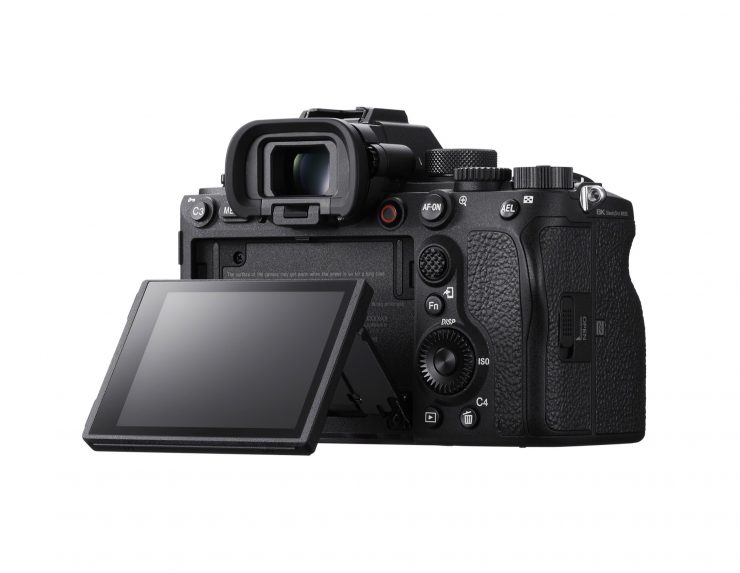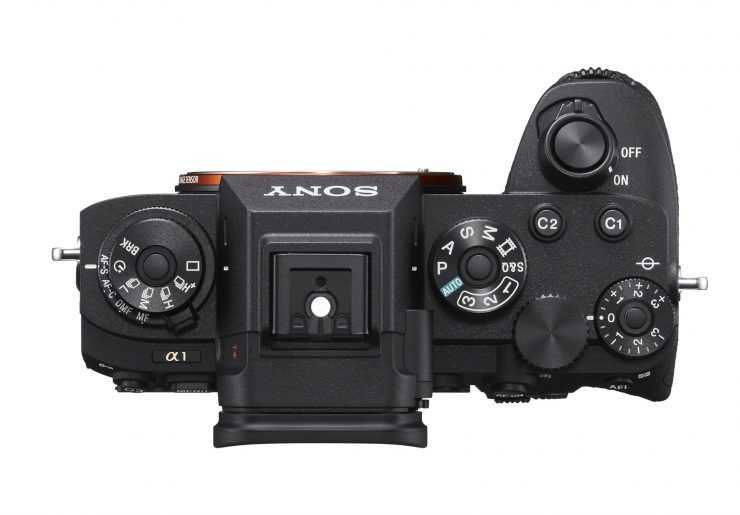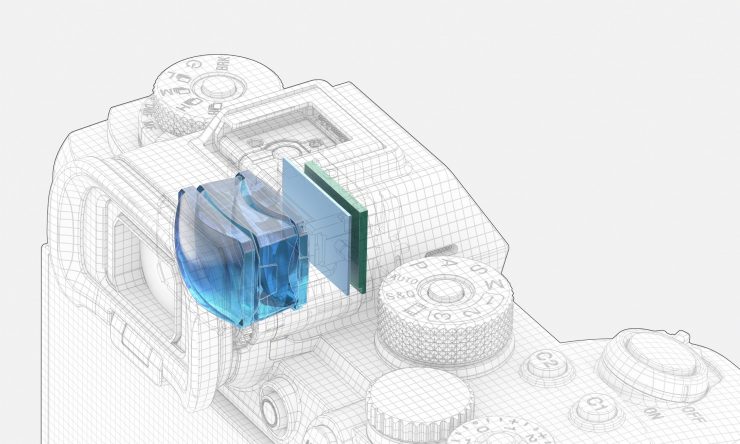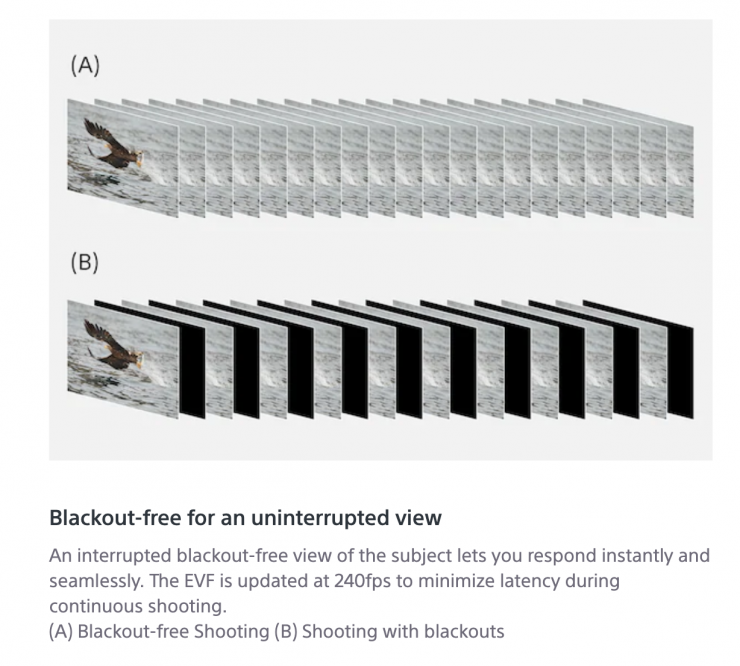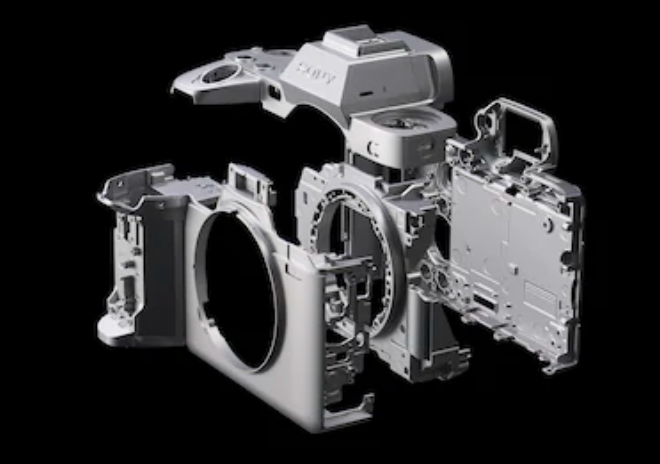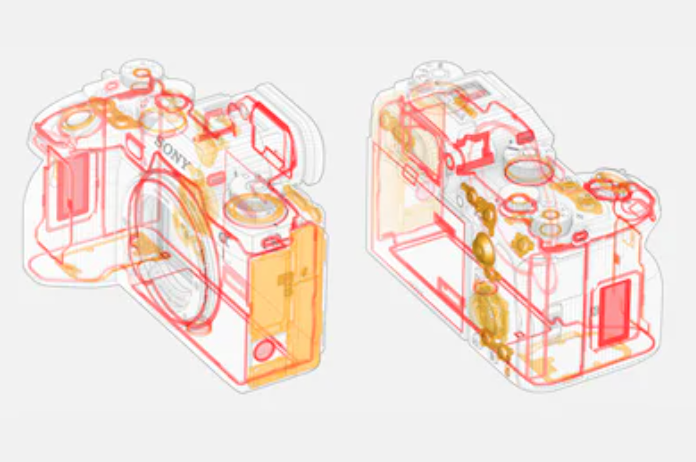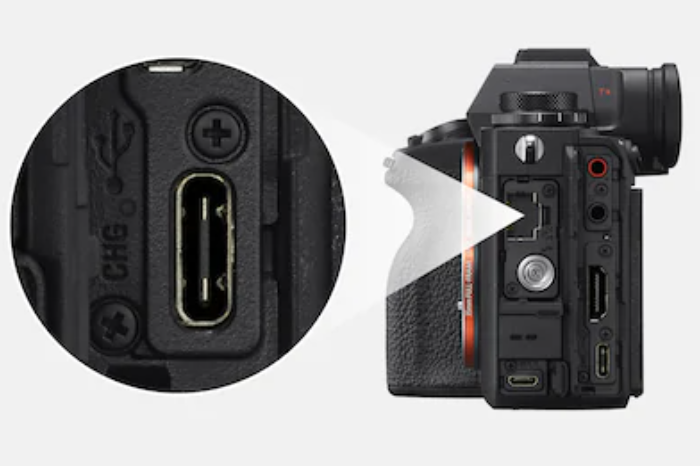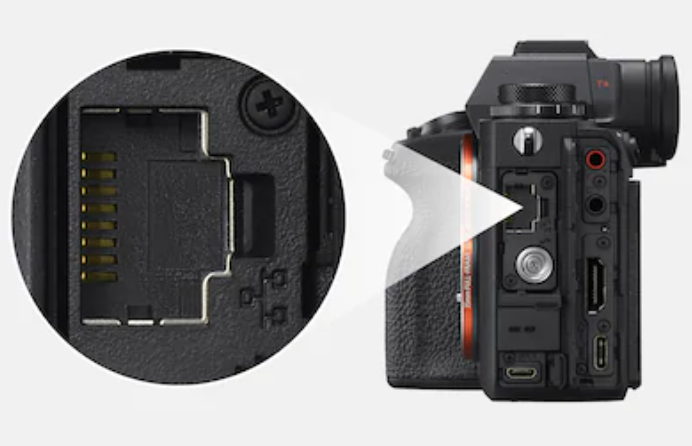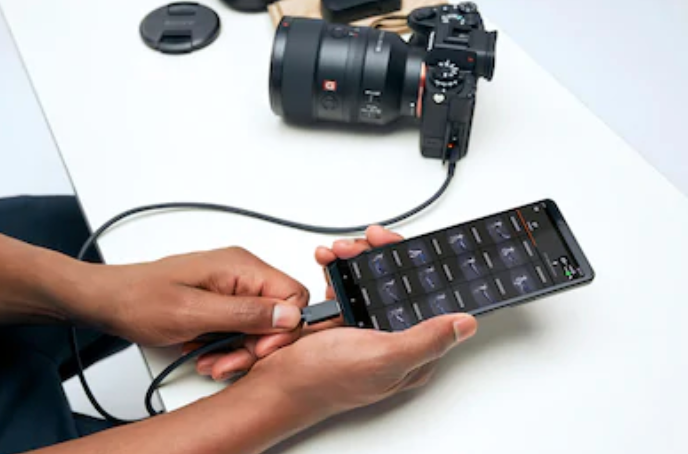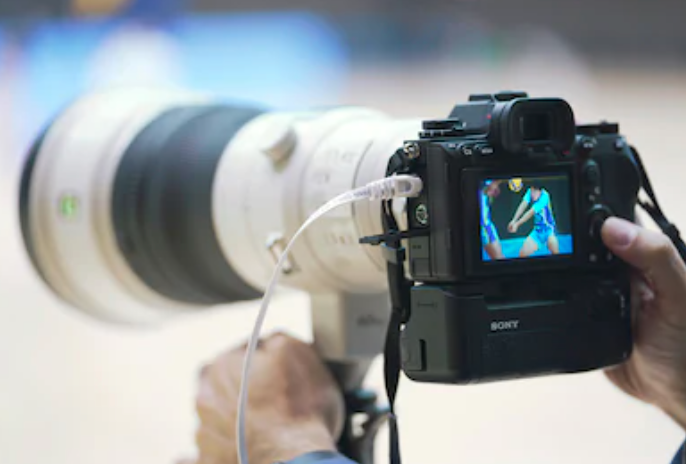Today Sony announced their new flagship mirrorless camera. The Alpha 1 is a 50.1-megapixel camera that can shoot up to 30-frames per second. As for video the alpha 1 shoots 8K 30p 10-bit 4:2:0 XAVC HS recording with 8.6K oversampling. The Alpha 1 is also capable of 4K 120p / 60p 10-bit 4:2:2 recording and includes S-Cinetone color.
The Alpha 1 offers in-camera 4K recording at up to 120 frames per second. In addition to supporting 10-bit 4:2:2 recording, this feature can be used with efficient Long GOP inter-frame compression or high-quality Intra (All-I) intra-frame compression.
The Alpha 1 features S-Cinetone, the same color matrix that produces the highly regarded FX9 and FX6 color and skin tones. The S-Log3 gamma curve makes it possible to achieve 15+ stops of dynamic range, while the S-Gamut3 and S-Gamut3. Cine color gamut settings make it easy to match Alpha 1 footage with video shot on VENICE cinema camera, FX9, and other professional cinema cameras.
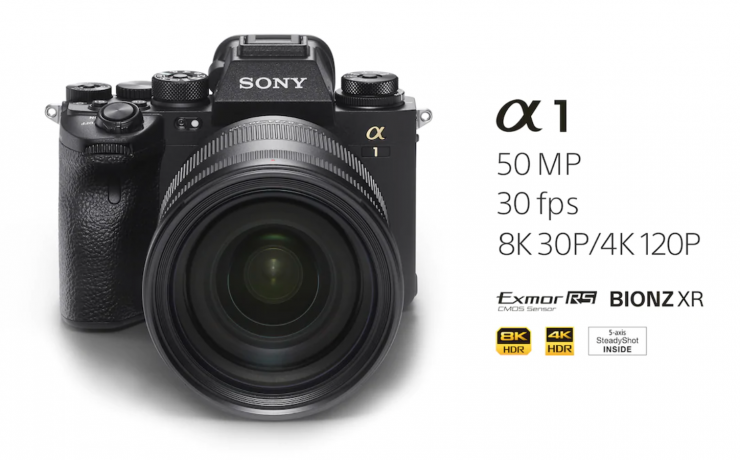
alpha 1 Key features
- New 50.1-megapixel (approx., effective) full-frame stacked Exmor RS™ CMOS image sensor in combination with an upgraded BIONZ XR™ imaging processing engine with eight times more processing power
- Blackout- free continuous shooting at up to 30 frames per second
- Fast sensor readout enables up to 120 AF/AE calculations per second, double the speed of the Alpha 9 II, even during 30fps continuous shooting
- Bright and large 0.64-type 9.44 million-dot (approx.) OLED Quad-XGA electronic viewfinder with the world’s first refresh rate of 240 fps
- Silent, vibration-free electronic shutter
- World’s first anti-flicker shooting with both mechanical and electronic shutter
- Electronic shutter flash sync up to 1/200 sec. for the first time in the Alpha™ series
- World’s fastestv mechanical shutter flash sync up to 1/400 sec.
- 8K 30p 10-bit 4:2:0 XAVC HS video recording with 8.6K oversampling for extraordinary detail and resolution, in addition to 4K 120p 10-bit 4:2:2 movie shooting capabilities
- Wide dynamic range of 15 stops for stills and 15+ stops for video
- Improved Real-time Eye AF (autofocus) for humans and animals, and new Real-time Eye AF for birds, as well as Real-time Tracking that automatically maintains accurate focus
- 5-axis optical in-body image stabilization for a 5.5-step shutter speed advantage
- S-Cinetone color matrix as seen in FX9 and FX6 to deliver expressive cinematic look
- Professional workflow support with the industry’s fastest built-in Wi-Fi, SuperSpeed USB 10Gbps, 1000BASE-T Ethernet and more
Video Features
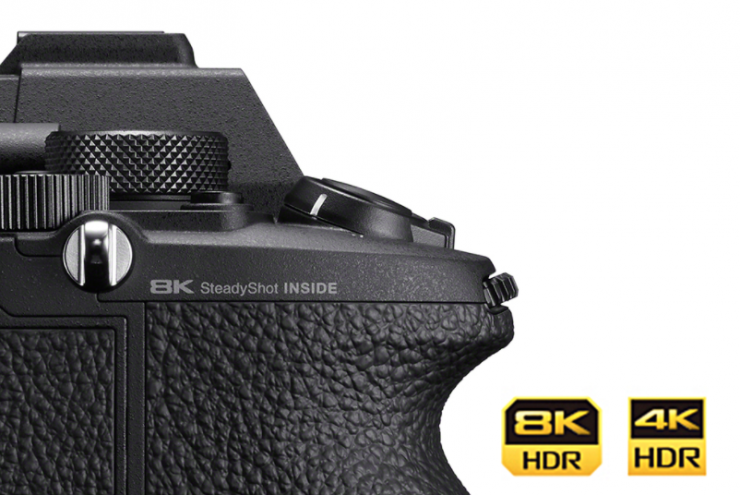
Sony certainly wasn’t shy in giving the Alpha 1 a lot of very useable video features.
For the first time in the α series, the α1 offers 8K 30p XAVC HS recording with 8.6K oversampling. Low-bit-rate proxy files with HD resolution can also be recorded simultaneously with 8K.
The α1 also allows you to record 4K at up to 120 frames per second. In addition to supporting 10-bit 4:2:2 recording, this feature can be used with efficient Long GOP inter-frame compression or high-quality Intra (All-I) intra-frame compression.
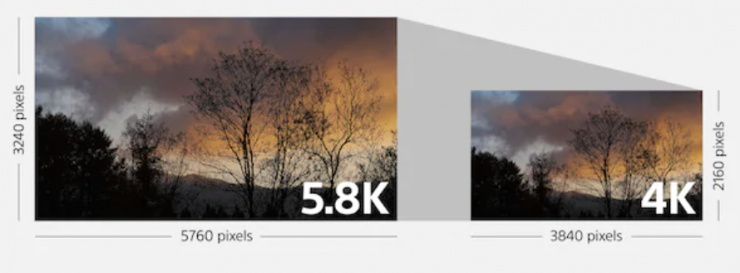
In the Super 35 mode, QFHD 4K is acquired through a full-frame readout with no pixel binning from a 5.8K portion of the sensor. As Sony does not mention it, it is probably fairly safe to assume that the 4K/UHD full frame is not being downsampled from a full-frame readout. There is likely to be some pixel binning occurring.
S-Log2 and S-Log3 are included. S-Log3 is claimed to provide a dynamic range of 15+ stops. S-Gamut, S-Gamut3, and S-Gamut3.Cine color spaces are also supported.
Below you can see the various recording formats, resolutions, picture profiles, and frame rates that are included.
RECORDING FORMAT
XAVC S, XAVC HS
VIDEO COMPRESSION
XAVC S: MPEG-4 AVC/H.264, XAVC HS: MPEG-H HEVC/H.265
COLOR SPACE
Rec. ITU-R BT.2100 standard compatible (BT.2020 gamut)
MOVIE RECORDING SYSTEM (XAVC HS 8K)
- 7680 x 4320 (4:2:0, 10bit, NTSC) (Approx.): 30p (400 Mbps / 200 Mbps), 24p (400 Mbps / 200 Mbps)
- 7680 x 4320 (4:2:0, 10bit, PAL) (Approx.): 25p (400 Mbps / 200 Mbps)
MOVIE RECORDING SYSTEM (XAVC HS 4K)
- 3840 x 2160 (4:2:0, 10 bit, NTSC) (Approx.): 120p (200 Mbps), 60p (150 Mbps / 75 Mbps / 45 Mbps), 24p (100 Mbps / 50 Mbps / 30 Mbps)
- 3840 x 2160 (4:2:0, 10 bit, PAL) (Approx.): 100p (200 Mbps), 50p (150 Mbps / 75 Mbps / 45 Mbps)
- 3840 x 2160 (4:2:2, 10 bit, NTSC) (Approx.): 120p (280 Mbps), 60p (200 Mbps / 100 Mbps), 24p (100 Mbps / 50 Mbps)
- 3840 x 2160 (4:2:2, 10 bit, PAL) (Approx.): 100p (280 Mbps), 50p (200 Mbps / 100 Mbps)
MOVIE RECORDING SYSTEM (XAVC S 4K)
- 3840 x 2160 (4:2:0, 8 bit, NTSC) (Approx.): 120p (200 Mbps), 60p (150 Mbps), 30p (100 Mbps / 60 Mbps), 24p (100 Mbps / 60 Mbps)
- 3840 x 2160 (4:2:0, 8 bit, PAL) (Approx.): 100p (200 Mbps), 50p (150 Mbps), 25p (100 Mbps / 60 Mbps)
- 3840 x 2160 (4:2:2, 10 bit, NTSC) (Approx.): 120p (280 Mbps), 60p (200 Mbps), 30p (140 Mbps), 24p (100 Mbps)
- 3840 x 2160 (4:2:2, 10 bit, PAL) (Approx.): 100p (280 Mbps), 50p (200 Mbps), 25p (140 Mbps)
MOVIE RECORDING SYSTEM (XAVC S HD)
- 1920 x 1080 (4:2:0, 8 bit, NTSC) (Approx.): 120p (100 Mbps / 60 Mbps), 60p (50 Mbps / 25 Mbps), 30p (50 Mbps / 16 Mbps), 24p (50 Mbps)
- 1920 x 1080 (4:2:0, 8 bit, PAL) (Approx.): 100p (100 Mbps / 60 Mbps), 50p (50 Mbps / 25 Mbps), 25p (50 Mbps / 16 Mbps)
- 1920 x 1080 (4:2:2, 10 bit, NTSC) (Approx.): 60p (50 Mbps), 30p (50 Mbps), 24p (50 Mbps)
- 1920 x 1080 (4:2:2, 10 bit, PAL) (Approx.): 50p (50 Mbps), 25p (50 Mbps)
MOVIE RECORDING SYSTEM (XAVC S-I 4K)
- 3840 x 2160 (4:2:2, 10 bit, NTSC) (Approx.): 60p (600 Mbps), 30p (300 Mbps), 24p (240 Mbps)
- 3840 x 2160 (4:2:2, 10 bit, PAL) (Approx.): 50p (500 Mbps), 25p (250 Mbps)
MOVIE RECORDING SYSTEM (XAVC S-I HD)
- 1920 x 1080 (4:2:2, 10 bit, NTSC) (Approx.): 60p (222 Mbps), 30p (111 Mbps), 24p (89 Mbps)
- 1920 x 1080 (4:2:2, 10 bit, PAL) (Approx.): 50p (185 Mbps), 25p (93 Mbps)
SLOW & QUICK MOTION (SHOOTING FRAME RATE)
- NTSC mode: 1fps, 2fps, 4fps, 8fps, 15fps, 30fps, 60fps, 120fps, 240fps,
- PAL mode: 1fps, 2fps, 3fps, 6fps, 12fps, 25fps, 50fps, 100fps, 200fps
PICTURE PROFILE
Yes (Off / PP1-PP11) Parameters: Black level, Gamma (Movie, Still, S-Cinetone, Cine1-4, ITU709, ITU709 (800%), S-Log2, S-Log3, HLG, HLG1-3), Black Gamma, Knee, Color Mode, Saturation, Color Phase, Color Depth, Detail, Copy, Reset
CREATIVE LOOK
ST, PT, NT, VV, VV2, FL, IN, SH, BW, SE, Custom Look (1-6)
MOVIE FUNCTIONS
Audio Level Display, Audio Rec Level, PAL/NTSC Selector, Proxy Recording (1280 x 720 [6 Mbps], 1920 x 1080 [9 Mbps], 1920 x 1080 [16 Mbps]), TC/UB, Auto Slow Shutter, Gamma Disp. Assist, RAW Output(HDMI)
16-bit RAW output

The α1 allows you to output 16-bit RAW to an external recorder via HDMI RAW output via HDMI is available while recording 4K internally.
The Full-frame 4332 x 2448 16-bit image output easily covers 4096 x 2048 DCI-4K, with a choice of frame rates and color spaces. It is also possible to output RAW via HDMI while recording XAVC HS 4K, XAVC S 4K, or XAVC S-I 4K to internal card media. Proxy recording is also available.
Just like with other Sony cameras that output RAW over HDMI, there is no current device that can record 16-bit linear RAW. Instead, it will be recorded as 10 or 12-bit ProRes RAW on a compatible Atomos device.
New Sensor
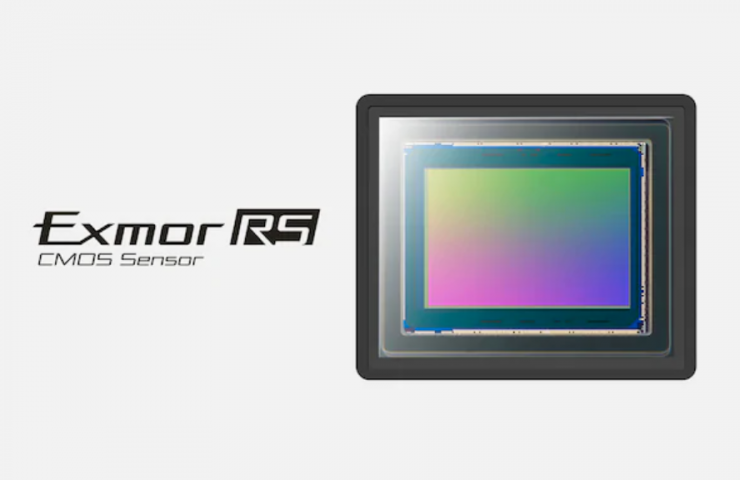
The newly developed image sensor is built with integral memory and paired with an upgraded BIONZ XR imaging processing engine, making it capable of shooting 50.1-megapixel images continuously at 30fps with up to 120 AF/AE calculations per second.
OLED Quad-XGA electronic viewfinder
The Alpha 1’s shooting capabilities are further enhanced by a 9.44 million dot OLED Quad-XGA electronic viewfinder, with a refresh rate of up to 240 fps, ensuring no black out.
Audio

The Alpha 1 has a Multi Interface Shoe so any of the current Sony XLR interfaces will work with the camera.
There is also a 3.5 mm Stereo minijack, a built-in stereo microphone, and a 3.5 mm Stereo headphone jack.
Durability & Weight
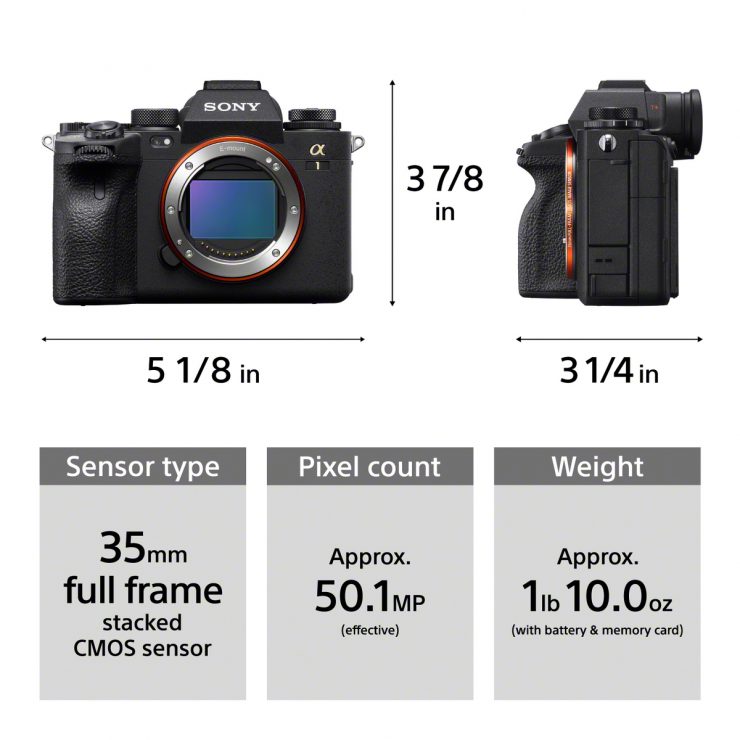
The Alpha 1 tips the scales at approx. 1 lb 10.0 oz (737 g) with a battery and memory card.
Heat-dissipating Structure
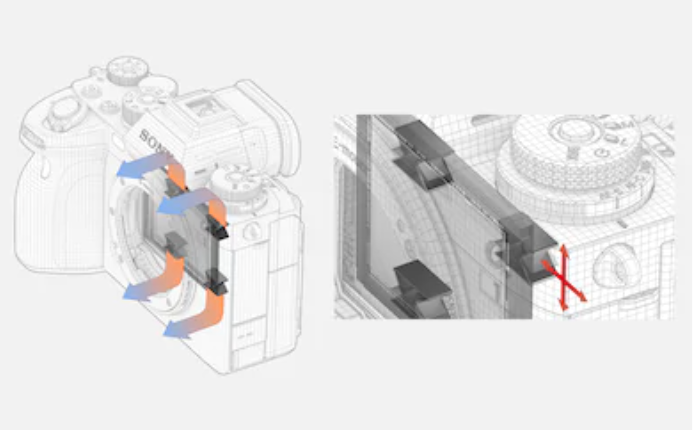
A unique heat-dissipating structure keeps the image sensor and image processing engine temperatures within their normal operating range, preventing overheating while maintaining compact body dimensions. This makes it possible to record 8K/30p video continuously for approximately 30 minutes.
Batteries
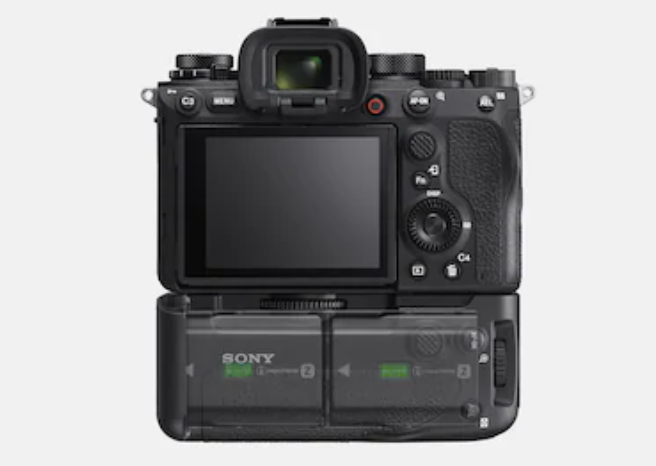
The Alpha 1 utilizes high-capacity Z-series batteries.
According to Sony, you can shoot up to 530 stills per charge. The components and circuitry have also been designed to optimize power use. If you need longer run times you can use two Z batteries in the VG-C4EM grip.
High Resolution
The Alpha 1 offers high sensitivity with low noise, plus 15+ stops of dynamic range for video and 15 stops for stills, for smooth, natural gradations from shadows to highlights thanks to its processing system, throughout a wide ISO sensitivity range of 100-32,000 (expandable to 50-102,400, when shooting stills).
Additionally, the new camera features an evolved Pixel Shift Multi Shooting mode that composites up to 16 full-resolution images. In this mode, the camera precisely shifts the sensor in one pixel or half-pixel increments to capture 16 separate pixel-shifted images containing a total of 796.2 million pixels of data, which are then composited into a 199 million pixel (17,280 x 11,520 pixels) image using Sony’s Imaging Edge desktop application. With a flash sync of up to 1/200 sec. in this mode, it is ideal for photographing architecture, art or any other still life subject with a high level of detail and color accuracy.
Media
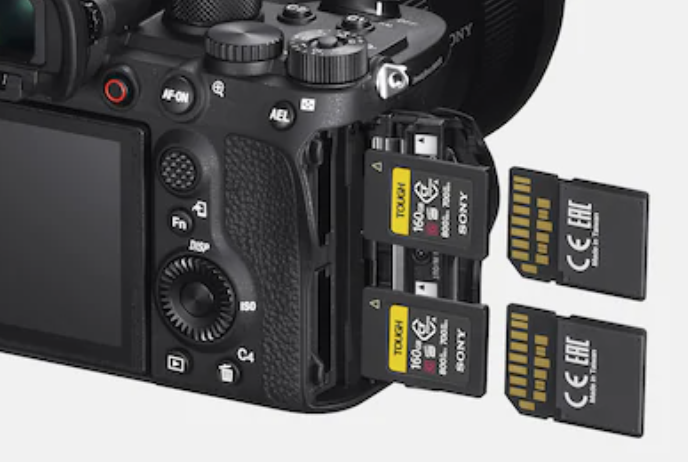
The Alpha 1 has two media slots that both support UHS-I and UHS-II SDXC/SDHC cards, as well as new CFexpress Type A cards for higher overall capacity and faster read/write speeds. It also features a durable magnesium alloy chassis, long battery life with the Z-battery which can be extended using the optional VG-C4EM Vertical Grip (sold separately), an improved dust removal feature, shutter close function on power-off to protect image sensor, plus dust and moisture resistance that maximizes reliability in challenging environments.
In-Body Image Stabilization
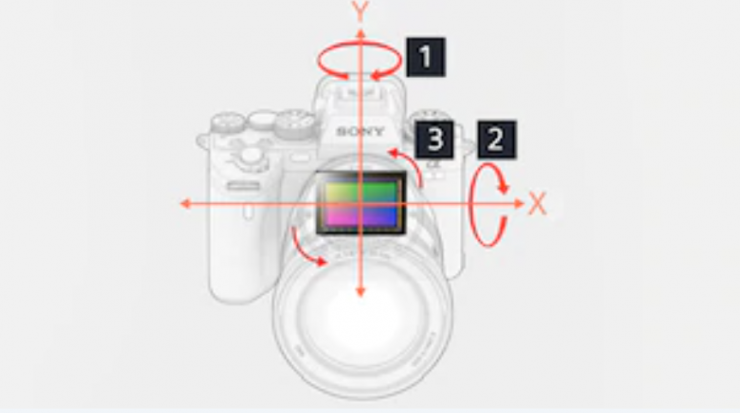
A high-precision stabilization unit and gyro sensors, plus optimized image stabilization algorithms, achieve up to a 5.5-step shutter speed advantage, maximizing the quality of the high-resolution images derived from the camera’s 50.1-megapixel sensor.
The Alpha 1 also features an Active Mode that offers improved stabilization for handheld movie shooting. When using Sony’s desktop applications Catalyst Browse or Catalyst Prepare for post-production, an accurate image stabilization function is available which utilizes metadata generated by the camera’s built-in gyro.
Electronic Shutter
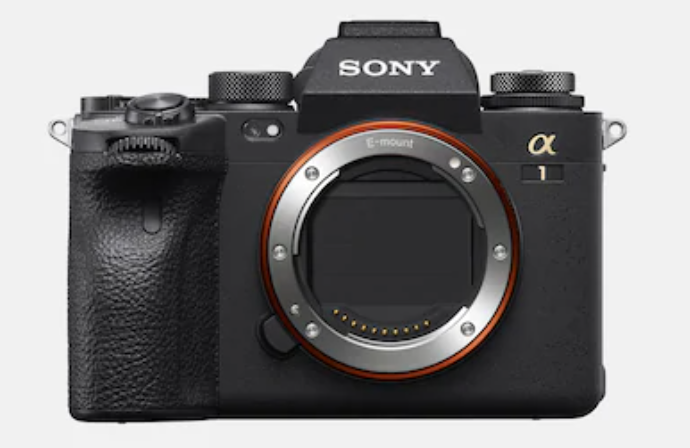
High-speed readout from the new image sensor has made it possible to reduce rolling shutter by up to 1.5 times when shooting stills, compared to the Alpha 9 II. It also offers silent anti-flicker continuous shooting with an electronic shutter for the first time in the world.
The electronic shutter operates silently, without mechanical noise, and is vibration-free. Continuous shooting is now possible even when shooting in challenging lighting situations with fluorescent or other flicker-prone types of artificial lighting. And for the first time in an Alpha camera, electronic shutter flash sync up to 1/200 sec is possible.
The fast sensor readout is claimed to minimize still-image distortion when using the electronic shutter. The BIONZ XR engine and a large buffer that is said to achieve about 1.5x less distortion than the α9 II.
New Menus

The Alpha 1 has separate settings for stills and movies. This means that a subset of the settings now changes according to whether you have selected video or stills mode. This is ideal when you want to use different aperture, shutter speed, and other settings for shooting stills and movies.

Another feature requested by users was to make a new menu structure for easier navigation. There is also a touch-responsive menu operation available.

164 Functions are assignable to 17 custom keys as well as the front and rear dials. Independent function sets can be assigned for stills, movies, and playback.
Inputs & Outputs
It includes a durable, reliable HDMI Type-A connector, and USB PD (Power Delivery) support, allowing higher power to be supplied from an external source so that users can record for extended periods with minimal internal battery usage.
News and sports photographers will like the 3.5 times faster wireless FTP transfer speed.
Things you should know
- Approximately 10% of the angle of view is cropped when shooting movies at 4K 120p and 8K
- When shooting movies at 4K 120p and 8K, [APS-C shooting] is fixed to [Off]
- When using Active Mode, the shooting angle of view is slightly narrower. If the focal length is 200mm or more, it is recommended to set it to standard. Active mode is disabled when shooting 8K movies
- At 240fps, the angle of view changes from QXGA to UXGA
- When shooting video, Real-time Eye AF does not work when shooting animals and birds
- You can browse 8K shooting materials with the PC application “Catalyst Browse” or “Catalyst Prepare”.
Thoughts
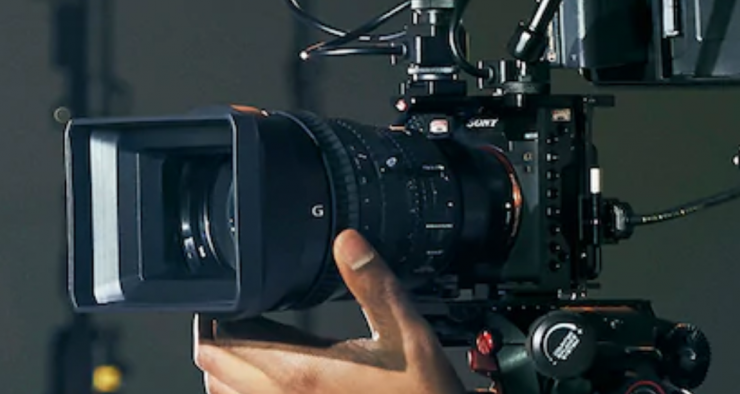
The new Alpha 1 looks like an impressive new flagship camera for Sony. 50 megapixels stills and 8K video in a camera that doesn’t catch on fire is an amazing feat. Just ask Canon.
Some will be disappointed that the new camera doesn’t have a fully articulating LCD screen. Instead, it uses the traditional tilting version seen in other Sony cameras. Sony states the reason for this is it’s targeted to stills photographers first and video second.
At $6500 US it’s very expensive if you want it for video. The photography features are extensive, the question is is it worth the high price tag.
If you are on the fence about getting an 8K capable high-megapixel camera is the Alpha 1 worth $2600 over the Canon R5?
The Alpha 1 is Sony’s answer to a $6500 Canon 1DX MK III type camera. It’s going to be the best of the bread in the Sony line up with impressive specs. Canon hasn’t released the 1DX mirrorless version yet so it will be interesting to see what will come because you know it will.
Photojournalists tend to like fewer megapixels. Is a 50-megapixel 8K camera something Canon will be interested in with a news-oriented mirrorless?
Pricing and Availability
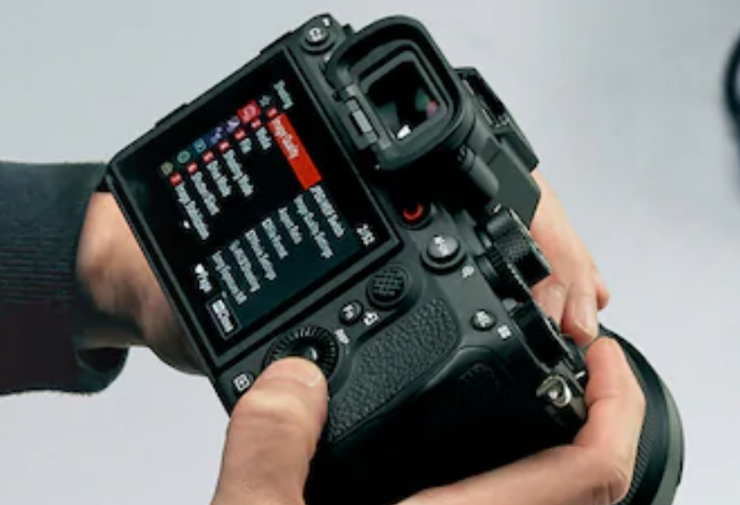
The Alpha 1 Full-frame Interchangeable-Lens Camera will be available in March 2021 for approximately $6,500 USD and $8,500 CAD.
Full specifications can be found HERE.
Like what we do and want to support Newsshooter? Consider becoming a Patreon supporter and help us to continue being the best source of news and reviews for professional tools for the independent filmmaker.

